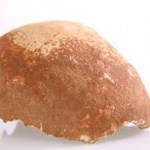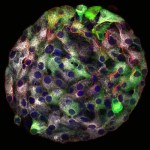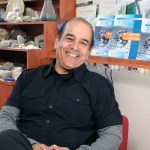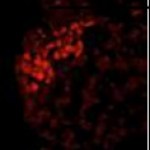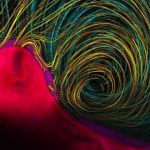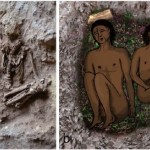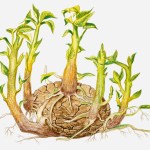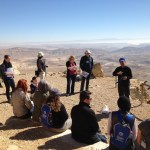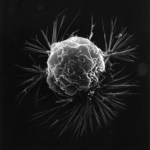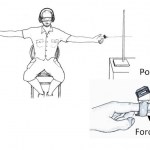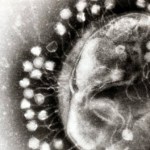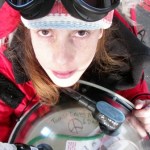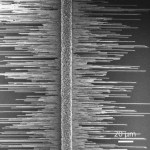Weizmann Institute
Manot Cave cranium
With a skull and Keats, there was little choice but to write about the new online items in rhyme. So with apologies to Shakespeare, Keats and the scientists, as well as the people at SpaceIL, here are today's grab bag of poems. As usual, follow the links.
On a Lone Cranium
Alas poor Yorick – We can only know
Where you lived all those eons ago
Walking, did you take those others in stride;
Human, yet strange, as they strode alongside?
Did your children wander forth,
Searching for a greener North?
Can your skull, a bit of bone,
Tell us where our seeds…
What's in a picture?
Prof. Benny Shilo knows the value of a good picture. We recently mentioned his book: Life’s Blueprint, which uses photographs of things like bread dough and yeast cells to illustrate the process of biological development. Here is the image from the most recent piece we have uploaded on his research:
This is an individual Islet of Langerhans, as you’ve never seen it before. The white dots are the insulin-containing vesicles inside the beta cells, which both sense glucose levels and secrete insulin. Shilo and his team managed to get “close-up shots” of the individual cell…
Prof. Nir Orion
Science Teaching researcher Prof. Nir Orion recently returned from Peru, where his award-winning Blue Planet teaching unit was adopted by the Peruvian Ministry of Education
Q: You have been working for many years to get schoolchildren out of the classroom setting. Why?
A: Schools in general and science teaching in particular are supposed to teach children about the world they live in. But they do it in a sterile environment that is disengaged from the real world; and thus many students do not find relevance or personal meaning in the subjects they “learn.”
There are,…
Getting cells to revert to a stem-like state – creating so-called induced pluripotent stem (iPS) cells – was a true revolution, but the technique invented in 2006 is only half the game. The first challenges include getting enough adult cells to undergo the “reprogramming” in culture to be of use and removing those traces of “priming” that distinguish them from true embryonic stem cells. The second is keeping them in the iPS state – that is, holding back their urge to differentiate – in lab conditions. And then there is the challenge of directing their differentiation in the way that you want…
What can I say about an event that counts both Carlsberg (as in the brewery) and Nature (the scientific journal) amongst its sponsors? That event will be the EuroScience Open Forum (ESOF) 2014. In just a week, I’ll be stepping out of my little bubble in the Weizmann Institute of Science in Rehovot, Israel, on my way to ESOF 2014, held this year in the big city of Copenhagen. There, I’ll be joining several thousand others, from Nobel laureates to mere journalists in a week-long marathon of science-related events.
I’ll be blogging daily from the week-long science fest. Not to name-drop, but…
Today’s new articles involve flow: the flow of positrons through the Universe and the flow of particles around the tiny cilia of corals. They involve beauty and mystery, as well. The particle flow, imaged in brilliant colors, won first place in the photography category of the 2013 Science/National Science Foundation International Science & Engineering Visualization Challenge.
And positrons – the anti-matter opposites of electrons – have been found in large numbers flowing in near-Earth space. Weizmann Institute research points to an answer to one riddle: Why did a satellite…
Today's guest post is by Weizmann Institute physicist, Prof. Micha Berkooz. Berkooz, a string theorist, recently organized a conference at the Institute on "Black Holes and Quantum Information Theory." We asked him about Hawking's recent proposal, reported in Nature under the headline:"There are no black holes."
Celebrated theoretical physicist Stephen Hawking has opened a can of worms in his 1976 paper on black holes. In a recent article, he is trying to put the worms back into the can. It may prove a little trickier than expected.
Black holes are solutions of Einstein's equations of…
Prof. Mario Livio takes the long view on science. In his newest book, Brilliant Blunders, he points out some of the mistakes made by some icons of science -- Einstein and Pauling among them. More importantly, he insists that researchers must be free to make mistakes.
Livio recently gave us a taste of his subject matter in a talk at the Weizmann Institute (in English):
http://www.youtube.com/watch?v=sYaMlTn275A
Last month we reported on the first people who, around twelve thousand years ago, were lining their loved ones’ graves with flowers. This month, we have a piece on the “extinct” frog that was “resurrected” and then discovered to be a living fossil.
Both of these studies were led by Israeli researchers from other institutions. The Weizmann contributions were what you might call technical: precise radiocarbon dating and x-ray micro-tomography. While the findings, themselves, were publicized in many scientific and popular publications, the technological advances that make these findings possible…
Since the haiku post was well received, and since we have another three pieces online today – each on a different finding and each interesting in its own right – I have decided to return to the haiku format. Among other things, there is something quite satisfying about distilling complex scientific findings down to 17 little syllables – like writing the perfect tweet, but more so.
In any case, follow the links to read more:
A burst of enzymes:
A transcription traffic jam
Watch for gene speed bumps
Genetics can rid
The poison from potatoes
Or add it elsewhere
image: Thinkstock…
The world – or at least a large swathe of Israel – was their classroom. An unusual international conference for science teaching experts started out at the Clore Garden of Science, on the Weizmann Institute campus. From there the “nomadic” conference made its way down to Eilat at the southern tip of the country, Jerusalem in the east and points in between.
Outdoor Learning Environment conference at the Ramon crater
Participating in the first international Outdoor Learning Environment conference were science education researchers from the US, UK, Canada, Denmark, Germany, Sweden, Portugal,…
Happy International Women's Day. In the midst of today's hand wringing about women in science, here's some good news: The Weizmann Institute has just been awarded a prize by the City of Barcelona for its efforts to promote women in science. Above: Barcelona Civil Rights councilor Francina Vila i Valls presents the award to the Institute's Dr. Karina Yaniv.
The centerpiece of this effort is the Israel National Postdoctoral Program for Women in Science, which gives grants, on top of the postdoctoral scholarships these women receive, specifically to enable them to move their families abroad…
New research at the Institute may offer a sliver of hope for treating “triple-negative” breast cancer. “Triple-negative” refers to the fact that the breast cancer cells are missing the three different receptors targeted by the currently available drugs, for instance Herceptin and steroid hormone blockers. This type of cancer also tends to be fairly aggressive, and the risk of early recurrence is higher than for other types of breast cancer.
Triple-negative breast cancer cells do have other receptors – particularly EGFR, a growth factor receptor that would seem to be a good target for…
We have been told what it’s like to be a bat or a bird; now Prof. Ehud Ahissar and Dr. Avi Saig are getting people to experience what it’s like to be a rat. Specifically, they want the participants in their studies to learn what it’s like to locate things in the dark by twitching their whiskers.
The point, of course, is not to get humans to pretend they are actually rats, but to see how they learn to sense the world with a new sense. Whisking is a fairly complex sense, involving spatial coordinates – horizontal, vertical and distance from the base of the whisker – and timing. It only works…
We were just getting used to the idea of our digestive tract as an ecosystem. There are 10 times as many bacteria in our gut as there are cells in our bodies, and the ecological balance between the different types might affect everything from our tendency to gain weight to our general health and susceptibility to various diseases.
Now, a Weizmann Institute researcher has exposed a whole new layer of this ecosystem: the viruses – called phages – that infect our gut bacteria.
Dr. Rotem Sorek and his team identified hundreds of these phages in the human gut. They were able to find them thanks to…
Not many Israelis make it all the way to the South Pole. (In fact, very few people go there, at all. Not only is it really, really cold, it is extremely difficult and expensive to transport people, gear and necessities to this remote and inhospitable corner of the earth.) So when we learned that Dr. Hagar Landsman, who recently joined the Weizmann Institute’s Physics Faculty, has a part-time gig at the IceCube neutrino detector array, we simply had to write about her. Landsman’s specialty is particle detectors, and IceCube has 5,000 of them buried under several kilometers of ice. In her brief…
A recent study by Prof. Ernesto Joselevich and his team, published in Science, features perfectly aligned horizontal arrays of thin, millimeter-long nanowires. We spoke with Joselevich recently to find out why he and others in the field are excited by this advance:
WSW: Your lab has produced a fair amount of innovative research in recent years. Why is this one special?
EJ: First of all, we succeeded in growing very long horizontal nanowires with exquisite control over their orientation. Because of the numerous potential uses for semiconductor nanowires, there is a lot of competition to…
Two recent papers to come out of the Weizmann Institute have possible medical applications -- one in preventing pregnancy, the other in preventing the deadly effects of nerve gas.
The first might give pause to those among us who are "believers" in antioxidants. It seems that those "nasty" molecules they eliminate -- reactive oxygen species -- have a positive role to play, at least when it comes to fertility. In the study, mopping up reactive oxygen species with antioxidants in mouse ovaries blocked ovulation. So while women who are trying to get pregnant might consider knocking off the acai…
Did Israeli singer-songwriter Arik Einstein know something that scientists didn't when he released the song "When You Cry You're Not So Pretty" back in 1969?
Prof. Noam Sobel and his team of the Weizmann Institute of Science have now shown that merely sniffing a woman's tears - even when the crying woman is not present - reduces sexual arousal in men.
This study raises many interesting questions. What is the chemical involved? Do different kinds of emotional situations send different tear-encoded signals? Are women's tears different from, say, men's tears? Children's tears? This study…
We are still frustrated in our efforts to get our new website up and running, so here's something dated to contemplate. Going through the old articles that are in the process of being transferred over, here's one that popped up from the second issue of Interface magazine (1992): Library without Walls. The article extols the new intranet services available to Weizmann Institute users:
Over the past year, notes Chief Librarian Ms. Ilana Pollack, several databases acquired by the Institute Library System have been hooked via optical readers and computer servers into the Institute's…
